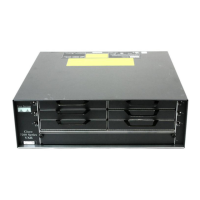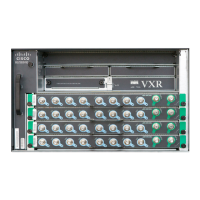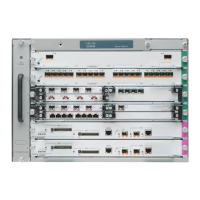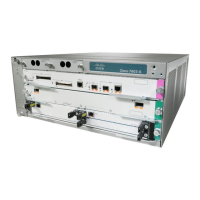Send document comments to nexus7k-docfeedback@cisco.com
6-3
Cisco Nexus 7000 Series NX-OS Interfaces Configuration Guide, Release 5.x
OL-23435-03
Chapter 6 Configuring Port Channels
Information About Port Channels
Port Channels
A port channel bundles physical links into a channel group to create a single logical link that provides
the aggregate bandwidth of up to 8 physical links on the M series module. If a member port within a port
channel fails, the traffic previously carried over the failed link switches to the remaining member ports
within the port channel.
Note Beginning with Cisco NX-OS Release 5.1, you can bundle up to 16 active ports simultaneously into a
port channel on the F Series module.
You can bundle up to 8 ports into a static port channel without using any aggregation protocol. On the
M Series module, you can bundle up to 8 active and 8 standby on the M Series module and up to 16 ports
on the F Series module.
However, you can enable the LACP to use port channels more flexibly. Configuring port channels with
LACP and static port channels require a slightly different procedure (see the “Configuring Port
Channels” section on page 6-15).
Note The device does not support Port Aggregation Protocol (PAgP) for port channels.
Each port can be in only one port channel. All the ports in a port channel must be compatible; they must
use the same speed and duplex mode (see the “Compatibility Requirements” section on page 6-5). When
you run static port channels with no aggregation protocol, the physical links are all in the on channel
mode; you cannot change this mode without enabling LACP (see the “Port-Channel Modes” section on
page 6-9).
You can create port channels directly by creating the port-channel interface, or you can create a channel
group that acts to aggregate individual ports into a bundle. When you associate an interface with a
channel group, the software creates a matching port channel automatically if the port channel does not
already exist. In this instance, the port channel assumes the Layer 2 or Layer 3 configuration of the first
interface. You can also create the port channel first. In this instance, the Cisco NX-OS software creates
an empty channel group with the same channel number as the port channel and takes the default Layer
2 or Layer 3 configuration, as well as the compatibility configuration (see the “Compatibility
Requirements” section on page 6-5). See Chapter 4, “Configuring Layer 3 Interfaces,” for more
information on creating and deleting port-channel subinterfaces.
Note The port channel is operationally up when at least one of the member ports is up and that port’s status
is channeling. The port channel is operationally down when all member ports are operationally down.
Port-Channel Interfaces
Figure 6-1 shows port-channel interfaces.

